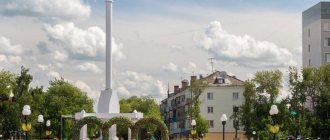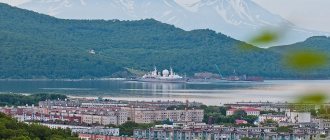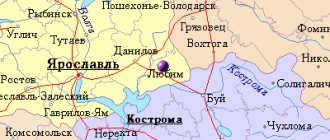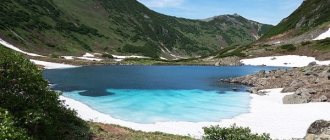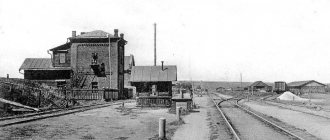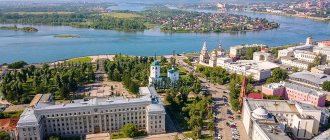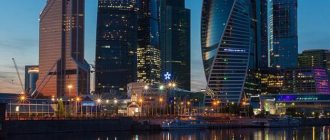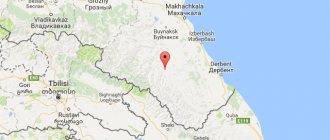General information and history
Petropavlovsk-Kamchatsky is a Russian outpost on the Kamchatka Peninsula, a city with a unique history and an even more unique location. The city is located on the shores of the Avachinskaya Bay of the Pacific Ocean, and is at the same time the base of the Russian Pacific Fleet.
View of Petropavlovsk-Kamchatsky from Nameless Volcano
Petropavlovsk-Kamchatsky is one of the oldest cities in the Far East. The first Cossacks arrived here in 1697. Here they founded a fort and laid out storehouses. For more than forty years, no new Russians arrived in Kamchatka, until in 1740 an expedition led by Alexei Chirikov and Vitus Bering on two ships “St. Apostle Paul” and “St. Apostle Peter” arrived to explore Kamchatka. The names of the ships eventually gave the name to the fort. It became Petropavlovsk.
Forty years later, Petropavlovsk was visited by two English warships Discovery and Resolution as part of John Cook's Third Around the World Expedition. Since then, all round-the-world regattas have anchored off the coast of Avacha Bay.
In 1812, the Peter and Paul fort received the status of a city and the name “Peter and Paul Harbor”. In the same year, the sovereign approved the “New Regulations on Kamchatka,” according to which a specially appointed governor-general was to govern the peninsula. Peter and Paul Harbor was chosen as the place for the residence of such a high rank.
View of Petropavlovsk-Kamchatsky
In 1849, the Kamchatka region was formed. The regional center became the Peter and Paul Harbor.
Directly from Petropavlovsk-Kamchatsky to Moscow is 8400 km. The real road would probably be 10,000 km, maybe more. How long would the soldiers march? How long would the carts travel? If the soldiers of central Russia went to rescue their Far Eastern comrades, they would have met a message about the end of the war somewhere in the area of modern Novosibirsk.
Thank God, no one had to help. The Far Easterners showed themselves to be brave warriors and defended the Peter and Paul Harbor in heroic battles. In memory of the brave soldiers, a chapel was erected on Nikolskaya Hill and a mass grave was made.
More than a century and a half later, in 2011, Petropavlovsk-Kamchatsky was declared the “City of Military Glory.” The reward found the hero, it’s just a pity that it’s so late.
18th century engraving depicting Petropavlovsk-Kamchatsky
Spring springs and geysers
There are about 150 large springs on the territory of Kamchatka, the closest to Petropavlovsk are Malkinskie and Paratunka.
Paratunka springs are located 60 km away. from Petropavlovsk - Kamchatsky, they are divided into several groups: Upper - Paratunka, Middle - Paratunka and Nizhne - Paratunka. The water in the springs contains a large amount of silicic acid. Helps in the treatment of diseases of the skin, musculoskeletal system and nervous system.
Malkinsky springs
Malkinsky springs are located near the village of Malki, 130 km. from the city, in the valley of the Klyuchevka River. In a small valley 0.5 km wide. There are thermal springs with hydrocarbonate-chloride-sulfate water, the temperature in them reaches 80 ° C. Visitors here are treated for diseases of the cardiovascular system, musculoskeletal system, nervous system and ENT organs.
You can get to the place by bus or car, and stay at a recreation center or in a tent camp.
120 km from the city, in the area of the Mutnovsky volcano, there is the Small Valley of Geysers. A fumoral field is located in a small area; it consists of natural holes in the ground through which hot steam and air pass. Near the valley are the Dachnye thermal springs and the Mutnovskaya geothermal power plant.
Small Valley of Geysers.
Despite the name, there are no real gushing geysers here; you can see them in the Kronnotsky Nature Reserve, and you can get there by helicopter.
Climate and ecology of Petropavsk-Kamchatsky
There are not many places in Russia where you can invite tourists. It is not only possible, but also necessary to invite tourists to Kamchatka. The nature here is truly unique. The elevation difference in Petropavlovsk-Kamchatsky itself is 513.6 meters. The lowest point is the level of Avacha Bay. The highest is Mount Rakovaya.
In principle, the entire city stands on hills. There are practically no smooth roads. Constant ups and downs. There are practically no small cars with weak engines here, since they are impossible to drive.
Geographically, Petropavlovsk-Kamchatsky is located south of Moscow, but nevertheless the climate here is much harsher than in the capital. Summer is very cold. It is comparable in average temperatures to Norilsk and Arkhangelsk. Nevertheless, winter on the peninsula is very warm. It is even milder than winter in St. Petersburg. Temperature differences throughout the year are small. In August, the average daily temperature is +12.4 °C, and in January – 7.7 °C below zero. That is, the difference is only 20.1°C.
Precipitation in Kamchatka falls mainly in autumn and winter. In summer, the peninsula is not hot and very comfortable.
The lake inside the Gorely volcano is very similar to the volcanoes located on Easter Island
When talking about the climate of Petropavlovsk-Kamchatsky it is impossible not to mention seismic activity. The eastern coast of the Kuril Islands, Kamchatka and Japan are the most seismically active places on Earth. In the last century, there was one magnitude nine earthquake, two magnitude eight and ten magnitude seven.
The environmental situation in Petropavlovsk-Kamchatsky is quite stable. The air is poisoned mainly by motorists and two local thermal power plants. Since the city has only 181 thousand residents, and only every sixth of them is a motorist, thirty thousand cars are not capable of causing significant harm to the city’s nature.
The water in Achinsk Bay is, of course, dirtier than it was a hundred or even fifty years ago. The reason for this is outdated ships, from which fuel oil regularly leaks. There are no other global environmental problems either in the city or in the region.
Population of Petropavsk-Kamchatsky
The indigenous inhabitants of the Kamchatka Peninsula are the Kamchadals, or as they are also called, the Itelmens. From time immemorial, Kamchadals settled along the banks of rivers rich in salmon, fished, and hunted in the forests.
There are very few Kamchadals in the total mass. About 10% of residents of Petropavlovsk-Kamchatsky. The rest of the people are Russians, Ukrainians and Armenians.
The indigenous inhabitants of the peninsula are the Kamchadals
In principle, the population is quite calm. You can walk along the evening streets without fear. The average age of a resident of Petropavlovsk-Kamchatsky is 44 years, with the average life expectancy on the peninsula being 57 years.
There are few young people; after school they move west to larger cities, where they try to stay. The most chic thing is to leave Kamchatka for Moscow. Few people succeed in making such a move. Happiness for many is Khabarovsk and Vladivostok. Krasnoyarsk and Novosibirsk are also considered prestigious cities.
At the moment, more people die in Petropavlovsk-Kamchatsky than are born. The city reached its peak population in 1989, when 286 thousand people lived in Petropavlovsk-Kamchatsky. Now the numbers are much more modest, just over 181 thousand at the beginning of 2022.
Approximately a quarter of residents have higher education. Most often, it is a correspondence course obtained at one of the local branches of universities. In terms of education, city residents are noticeably behind the leading regions of the country and are not leaders even in the Far East.
Lava caves
The famous lava caves of Gorely volcano are located 75 km away. from the city, in the northern part of the volcano, their age is 2,000 years. The longest cave has a length of 140 m, and the shortest is 16 m; there are currently 14 caves in total.
They appeared as a result of frequent volcanic eruptions. Lava flowed down the slopes in a rapid stream and, as the upper layer cooled, peculiar grottoes formed. The caves most visited by tourists are called “Dark” and “Grotto”.
There are lava caves in the area of the Tolbachik volcano; there are a little more than 10 caves there. The last of them were opened after the 2013 eruption. Not all caves are accessible for visiting, since in some the air temperature reaches -20–30 °C.
The highest cave is called “Kholodnaya”, the height of the vault is more than 10 m. The “Beautiful” cave got its name for the many multi-colored stalactites on the ceiling. You can get to the volcanoes by car or helicopter. The ascent will take from 3 to 6 hours and is suitable even for tourists who do not have special training.
Districts and real estate of Petropavsk-Kamchatsky
From time immemorial there were no districts in Petropavlovsk-Kamchatsky. At the beginning of the twentieth century, no more than a thousand people lived in the city. Of course, decades later the situation changed, but zoning never took root. In 1973, Petropavlovsk-Kamchatsky was divided into Oktyabrsky and Leninsky districts, and in 1988 the districts were abolished.
Map of Petropavlovsk-Kamchatsky
Now the city is divided into microdistricts, which are usually separated from each other by mountains or bodies of water. There are microdistricts “Fourth Kilometer”, “Fifth Kilometer”, “Sixth Kilometer”, Northeast, Horizon, Silhouette, Center. In addition, the city includes nearby villages: Nagorny, Avacha, Zaozerny, Radygino, Dalniy, Khalaktyrka, Mokhovaya, Chapaevka, Zavoiko.
There is no such thing as a central street in Petropavlovsk-Kamchatsky. Karl Marx Avenue and Sovetskaya Street can compete for the right to be called this way. Due to the city's hills and uneven terrain, the city occupies a huge territory, but the buildings are very sparse, so it takes a long time to get to socially significant objects from almost anywhere in Petropavlovsk-Kamchatsky.
Central district of Petropavlovsk-Kamchatsky
Without exaggeration, we can say that Petropavlovsk-Kamchatsky is located in one of the most beautiful places in the world. All around is the ocean, volcanoes, bays, hills. From the balcony of an ordinary house here you can see such beauty that you have never even dreamed of in any five-star resort. With such wonderful nature, Petropavlovsk-Kamchatsky remains one of the ugliest and ugliest cities not only in Russia, but probably in the world. The residents of Petropavlovsk absolutely do not appreciate the beauty in which they live; even their houses look like temporary huts or barracks because of this.
Local residents here sew up the walls with huge metal sheets, this is done because it blows strongly in the rooms located on the windward side. Vetra, by the way, be healthy in Petropavlovsk-Kamchatsky.
In general, there are no normal hotels in the city. The only decent hotel is located half an hour from the city center, among the pine trees. There are no amenities of civilization near the hotel, but there is a submarine base.
Petropavlovsk residents live every day in anticipation of tremors, but they never come. Periodic earthquakes spoil everything for the townspeople. The only positive thing they bring is beautiful bay windows on buildings, but here they are used not for beauty, but for the sake of lateral strength. Each apartment in a Petropavlovsk apartment building has a shockproof ledge with access to a small balcony. People call this ledge and this balcony the captain's bridge.
There are excellent conditions here for skiers, snowboarders, and lugers. There was no such thing as Krasnaya Polyana or the Grand Canyon. We need an active volcano - please. Valley of Geysers? We have it too. But no. Nobody needs anything. Of course, going to the Kamchatka resort will not be a cheap pleasure, but there are moneybags who vacation in Chile and climb the Himalayas. Why don't all these people come to Kamchatka?
If suddenly some crazy traveler ends up in Petropavlovsk-Kamchatsky, then the best place for him to live is to choose the Central Microdistrict, or, for short, the center, since all the city’s most important department stores and shops are concentrated there. It is from here that transport departs to all other settlements.
Where to go: attractions and interesting places
Petropavlovsk-Kamchatsky cannot boast of significant architectural monuments. The buildings here were built mainly in the 60-80s of the last century, so the capital of the region looks like a Soviet city with standard houses, but in an amazing natural setting. The decoration of the houses has a local flavor associated with the climate. For example, these are metal sheets that are used to cover the walls on the side from which the coldest and strongest wind blows. The wind situation in the city is by no means calm, so such precautions are understandable.
Another feature is the so-called “captain's bridges” in the houses. Due to seismic instability, buildings are equipped with shockproof projections. In residential buildings, such a ledge is designed as a small balcony. Such bay windows, having a purely practical meaning, at the same time play an aesthetic role, decorating houses.
Local museums await residents and guests of the city; they are very interesting and introduce different aspects of Kamchatka life. In addition to the joint and art museums, it will be interesting to visit the museums of the Institute of Volcanology and Seismology, as well as the Scientific Institute of Fisheries and Oceanography. The famous Kamchatka salmon has its own separate museum. There is also a volcano museum called Vulcanarium. This is not a complete list. The city also houses exhibition halls, including the Center for Contemporary Art Loft “Park Kultury”.
When the theater season is open, the evening cultural program can be continued in theaters or at the Philharmonic. Cinemas are open daily.
Infrastructure condition
If you imagine Petropavlovsk-Kamchatsky as a big dog, and the city infrastructure as a dog’s paws, then the dog will turn out to be lame. The city has terrible roads. Nobody wants to lay more durable concrete, preferring asphalt to it. Light seismic tremors are common in this area. As a result, the asphalt is always cracked. Where there are cracks, holes eventually appear. Nobody patches holes for a long time. They collect taxes from residents regularly, but do not use them for their intended purpose. Maybe they are building an underground bunker with these funds? Where were all the townspeople able to escape after the end of the world? Unknown.
All utilities in Petropavlovsk-Kamchatsky are very expensive. Electricity costs 3.47 rubles per kilowatt. Hot water - 18 rubles per cubic meter, cold water - 6 rubles. Such prices are explained by the fact that no one wants to receive energy from wind in Kamchatka. The energy of sea tides is also not used in any way. Only thermal power plants remain. City boiler houses cannot cover the entire city. Many microdistricts have their own stokers, where people who did not do well at school work. Stokers create a lot of smoke in the sky and, in unfavorable winds, can blow into someone’s apartment.
The main type of transport in the city is a bus, and a small bus. The bus traffic pattern resembles the sun. All routes depart from the city center, and two more run along the perimeter of Petropavlovsk-Kamchatsky. In fact, for a small city located on a large territory it is very difficult to come up with something more convenient. The grooves, by the way, are very old and often break down, and sometimes they can’t handle the climb uphill.
There are enough kindergartens, as well as schools. At the end of the eighties, there were a hundred thousand more people living in the city and the entire infrastructure was built for them. Now there are even empty kindergartens. This is not Moscow, the vacant premises here are of no interest to anyone. If you walk around the city, you can count several dozen empty buildings.
The sheets used to decorate houses rust over time.
Despite this, real estate in the city is quite expensive. Rent an apartment daily on Khreshchatyk, in Kyiv, costs the same as in Petropavlovsk-Kamchatsky. Kamchatka does not yet reach Moscow prices, but there will be more. A one-room apartment without any frills costs an average of two million rubles in the city. A two-room apartment costs five hundred thousand more, a three-room apartment costs a million.
Enterprises and work in Petropavlovsk-Kamchatsky
The city-forming enterprise of Petropavlovsk-Kamchatsky is the ocean. Without him, no one would have lived here long ago, despite all the beauty. OJSC Kamchatrybprom, Okeanrybflot, the fishing collective farm named after Vladimir Lenin, CJSC Akros and many small companies operate in the seafood market. The entire industry is controlled by the mafia. Now, however, they call themselves businessmen, but some fifteen years ago, when things were still turbulent, these same people shot at each other, trying to grab a bigger piece of the pie.
It’s a shame that most Kamchatka seafood is exported abroad, and imported into Russia already processed. Failure to develop the full range of fish and seafood production and processing is a disservice not only for Petropavlovsk-Kamchatsky, but also for the entire country. During the fishing season, hundreds of fortune seekers come to the city to hire a sailor and set sail. Sailors often undermine their health on these trips, but at the same time earn very good money.
Volcanic eruptions in Petropavlovsk-Kamchatsky are visible even on a bus
Not long ago, the mining industry began to develop in Kamchatka. Gold, platinum, nickel and silver are mined there. Outsiders are not allowed into the mines, since for a month of unskilled labor there you can get more than a hundred thousand rubles, which is a very good amount for Kamchatka.
Mountain ranges and hills
An amazing and picturesque place near the city of Petropavlovsk (about 80 km) is the Vachkazhets mountain range. It belongs to the Yuzhno-Bystrinsky ridge and is included in the “List of specially protected natural areas of regional and local significance of the Kamchatka Territory.”
Its name comes from the ancient Ietelmen word “Vachkagach”, which means “Flowing from a stone ridge”.
After the volcanic eruption, the massif was divided into three peaks: Letnyaya Poperechnaya and Vachkazhtsy. At the moment, the volcano is considered inactive. Many species of plants and animals living in this place are listed in the Red Book. In the circuses of the massif there are glacial lakes - Takhkoloch and Nikolskoye. There are many tourist routes along Vachkazhets.
On the map of Russia, Petropavlovsk-Kamchatsky is washed by Pacific waters on one side, and bordered by many hills and active volcanoes on the other. The hills are located about 30 km. from Petropavlovsk, local residents call them “Home Volcanoes”. Their peaks are visible from anywhere in the city. This group of volcanoes includes: Avachinskaya Sopka, Koryakskaya and Vilyuchinskaya.
Avachinskaya Sopka rises to 2741 m, the diameter of its crater is 400 m. It belongs to the group of active volcanoes of Kamchatka, its formation took place over 30 thousand years. The base of the volcano consists of basalt and andesite rocks, and its top is covered with an ice cap. Since 1700, the volcano has erupted 15 times, the last eruption being in January 1991.
Avachinskaya Sopka
Koryakskaya Sopka is one of the active volcanoes of Russia, its height is 3456 m, it is the highest volcano on the map of Petropavlovsk-Kamchatsky in the Avacha group. Its ancient crater is completely filled with glacier. The modern crater has a diameter of 200 m and a depth of 20–30 m.
The hill consists of basalt-andesitic rocks and has a conical shape; it belongs to the stratovolcanic group.
In the 17th century the hill was called Strelochnaya. In the area, local residents collected volcanic glass for household use. Later, in the 19th century, an ancient people settled at the foot of the volcano - the Koryaks and the hill began to be called Koryak. Scientists have found that over 7000 years the volcano erupted about 7 times. The last activity was in 2008, but lava did not reach the surface.
The Koryak hill was included in the UNESCO World Heritage List in 1996.
KORYAK SOPKA
Vilyuchinskaya Sopka is located southwest of the city on the territory of the South Kamchatka Natural Park. Its height is 2173 m, the hill is considered an extinct stratovolcano, and gas-vapor clouds often appear above its top. On the northern side, among the cones of the hill, there are lakes – Topolovoe and Zelenoe. In the eastern part there are hot springs and Vilyuchinsky waterfall.
Vilyuchinskaya Sopka is a popular place among tourists; in winter you can go snowboarding, snow scootering or skiing here.
Crime
The most common crimes in Petropavlovsk-Kamchatsky are somehow related to poaching. In the 90s, the “earners” sorted things out among themselves. Since the 2000s, they have been fighting against law enforcement agencies. Unfortunately, the police in Kamchatka are very corrupt and they do not fight all poachers. Those who pay for their peace of mind do not experience any discomfort. The rest sometimes have to sweat, hiding from pursuit.
There have never been any high-profile contract killings in Petropavlovsk-Kamchatsky. Mostly only Mother Nature is stolen or robbed here, so we can summarize that the city, despite all its greyness, is quite calm.
Interesting facts about the city
- The main construction began in 1960 during Soviet industrialization.
- All buildings in the city are no higher than 5 floors, due to frequent earthquakes.
- The city produces about 80% of the industry of the Kamchatka Territory.
- Included in the list of cities of historical value.
Petropavlovsk-Kamchatsky is one of the most ancient cities on the map of Russia. Over the course of several decades, the city has turned into a cultural and historical center of the Far East, with developed infrastructure and industry.
Article design: Vladimir the Great


